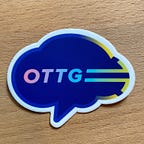How Communication Drives Equity, Relationships, and Engagement
Another week goes by and with it comes yet another call out of the widening learning gap afflicting so many students and families. Last week I sketched out five core elements of a “Equitable Access to Education Playbook” (EAEP), and this past weekend a Remind.com colleague forwarded me a similarly structured framework for closing the learning gap among students in New York City published in The74Million.org. One clear overlapping theme between our two approaches: the critical role communication will play in connecting all stakeholders in school communities.
The74Million piece highlights the importance of ensuring that parents are informed when it comes to school reopening plans this spring and summer plans for providing interventions that will help kids get ready for the next school year that will begin in August and September. But communication goes well beyond updates. Communication can powerfully bind together teachers, administrators, parents, and other support stakeholders like coaches, counselors, tutors, and learning specialists to ensure students get the support they need to stay on track.
There’s another important reason why I highlighted communication as the first requirement in my Equitable Access to Education Playbook. Communication is the catalyst for an important sequence that starts with “equitable access” to then fostering trusting “relationships” to ultimately enabling true student and parent “engagement”.
Indeed, the first step that emanates from establishing a vibrant 2-way communication channel that connects schools to students and parents represents the most basic level of “equitable access” to education. Without this communication channel operating via any mobile device — and regardless of one’s data plan — students and parents may very well miss out on homework assignments, opportunities to get help from teachers, or even the most critical information coming from school and district leaders.
Communication that facilitates “equitable access” to learning and information leads to a next even more powerful next step in the sequence— relationship building. The more often a student hears from their teacher, and a parent or caregiver hears from that same teacher as well as the school’s principal or the district’s superintendent, the stronger the relationships become across all stakeholders. The deeper these relationships become, the more trust that’s engendered, and for students this leads to the third critical benefit that communication delivers: student and parent engagement.
When students and parents can be fully connected and engaged, learning gaps can be narrowed and educational outcomes can be realized. Think about the teachers (or maybe it was just one teacher) that kept you engaged as a student. Your relationship with that educator fostered your curiosity, personal responsibility, and desire to succeed. Likewise, when parents can also be engaged with their child’s educators they amplify the teacher’s voice when the teacher’s can’t be there. When parents are in the know, they can provide that helpful nudge and support when homework gets hard on a Thursday night or when that science project needs a little extra work over a weekend.
We can absolutely close the learning gap in this country. Many pieces need to be invested in simultaneously and it will take time to realize the day when every K-12 student arrives at their high school graduation day prepared for their higher education experience. Let’s start by establishing a ubiquitous communication infrastructure that brings every stakeholder together in realtime via their mobile device. When we do this, the power of communication will unleash:
- equitable access to learning experiences and vital information for every student and parent that create
- deeper, more trusting relationships between educators, students, and parents that enables
- heightened engagement levels among students and parents which help close learning gaps and support higher rates of educational outcomes for students.
